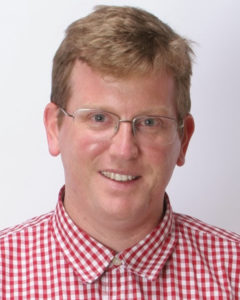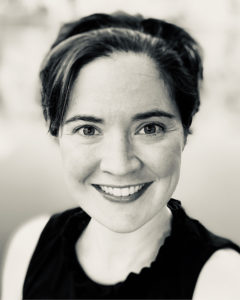Posted on December 12, 2019 in ASRC News, Environmental Sciences Initiative, Featured News, Nanoscience Initiative, Neuroscience Initiative, Photonics Initiative, Structural Biology Initiative
ASRC Seed Grants Helped These CUNY Scientists Move from Ideas to Funded and Published Research
Receiving funding to explore the earliest stages of scientific inquiry is challenging for researchers. That’s why five years ago, with the opening of its doors, the ASRC launched its Seed Grant Program. The annual grants encourage an interdisciplinary approach that leverages the ASRC’s five initiatives and 15 core facilities to support science faculty from across CUNY in gathering the data and evidence that they will need to pursue major funding.
“The ASRC was conceived as a resource for elevating science across every corner of CUNY, so it’s very gratifying as we look back on our first five years to see that these grants are succeeding in helping researchers launch work that otherwise might not have gotten off the ground,” said ASRC Executive Director Annette C. Gray. “We’ve provided over $720,000 to fund 58 research projects covering a wide field of inquiry, including how we can make cancer therapies less toxic, speed transmission of information over the internet, and replace hydro dams with energy technology that is more environmentally friendly.”
Many ASRC Seed Grant winners have gone on to receive federal funding for their work, and some have also published related papers in major journals. Here is a look at how the grants have enable five faculty members from various CUNY colleges to advance their work from its earliest stage.
 |
Professor Maria Contel, Brooklyn College, Chemistry Department2015 ASRC Nanoscience Initiative RecipientResearch Focus: Improving the targeting and delivery of metal-based chemotherapies by using nanocarriers. Professor Contel partnered with the Nanoscience Initiative to investigate the development of peptide-based biodegradable nanocarriers that can encapsulate metal-based chemotherapy agents and deliver them directly to targeted cancer cells. Her lab’s goal is to create nanostructures that can circulate in the blood for a prolonged period and then release a precise dose of the chemotherapy agent only when the drug-filled nanostructures reach the targeted tumor. Such technology would facilitate cancer therapies that are less toxic and more effective. Outcome: Working with Jiye Son, a former Ph.D. student in the lab of Nanoscience Initiative Director Rein Ulijn, Contel was able to prepare and characterize 12 non-toxic, biodegradable nanocarriers that can self-assemble and potentially encapsulate and manage the delivery of chemotherapy drugs used to treat renal and certain breast cancers. The findings were published by ACS Nano, and Contel was able to use the data expand the aims of an existing four-year National Institutes of Health (NIH) grant so that she can continue her work to develop these nanocarriers. |
 |
Professor Tim Ellmore, City College of New York, Psychology Department2018 ASRC Neuroscience Initiative RecipientResearch Focus: Using electroencephalography (EEG) and functional magnetic resonance imaging (fMRI) to study brain connectivity for working- and long-term memory Professor Ellmore is interested in determining whether new information will successfully transfer from a person’s short-term memory to their long-term memory, allowing them to recall information hours to years later. He partnered with A. Duke Shereen, director of the Neuroscience Initiative’s MRI facility, to design and execute experiments using EEG and fMRI to map brain activity patterns and ultimately predict whether an individual will be able to remember the details of pictures 30 minutes later. His work may have identified a specific interaction between the brain’s hippocampus and parietal cortex regions as a strong predictor of whether an individual can form accurate long-term memories. The findings could provide a better understanding of how memories are developed and facilitate development of therapies for age-related memory loss, depression, and other cognitive disorders. The Seed Grant allowed Ellmore to collect much needed data to revise a previously unfunded NIH grant. The resubmitted grant proposal was funded in April 2019. The research team is now preparing a paper on their findings, which they hope to publish in 2020. |
 |
Professor Jean Gaffney, Baruch College, Natural Sciences Department2015 ASRC Structural Biology Initiative RecipientResearch Focus: Characterizing the proteins that create biofluorescence in certain marine life. Eels are among the collection of marine organisms that are biofluorescent. Professor Gaffney was interested in finding the protein that causes this trait in the chlopsid eel. Seed Grant funding allowed her to use the Structural Biology Initiative’s core facilities to identify and characterize the protein, called ChlopsidFP. This protein requires bilirubin to fluoresce, which is also a characteristic of other previously identified eel fluorescent proteins such as UnaG. Humans produce bilirubin as a byproduct of hemoglobin breakdown. Significant accumulation is a hallmark of conditions such as jaundice. Gaffney’s team was able to use their research to patent the sequence used to express the bilirubin protein. The sequence might lead to a new test for jaundice in newborns. The data was used to help Gaffney secure a National Science Foundation (NSF) grant in 2017, and she is now investigating and characterizing other biofluorescent organisms. |
 |
Professor Alexander Khanikaev, City College of New York, Electrical Engineering Department2018 ASRC Photonics Initiative RecipientResearch Focus: Creating a framework for the design of metamaterials that enable 5G technology and faster processing of data There is a fast-growing need for communications technology that can transmit increasingly complex data more rapidly and with the assurance that it will arrive intact. The science of photonics takes on this challenge by creating metamaterials (engineered structures that combine materials with different properties, enabling capabilities and behaviors that are outside the natural laws of physics) that facilitate such technological advances. Professor Khanikaev is interested in developing metamaterials that are small enough to fit inside the mobile devices that we use every day. Seed Grant funding allowed him to use the ASRC nanofabrication laboratory to begin combining non-magnetic materials previously designed in collaboration with Photonics Director Andrea Alù with magnetic materials to create and test new metamaterials that would enable faster internet and facilitate integration of 5G function in mobile devices. Khanikaev’s work was used to help secure an NSF grant and a Defense Advanced Research Project Agency grant so that the team can continue their work to test and fabricate metamaterials. |
 |
Professor John Waldman, Queens College, Biology Department2016 ASRC Environmental Science Initiative RecipientResearch Focus: Restoring the health of Atlantic riverways through the replacement of hydro dams The United States has over 2,600 hydro dams that are stressed by climate change and are also causing ecological problems for migratory fish such as salmon and shad, many of which can’t get past the dams to reach their spawning grounds. These fish are a major component of the ecological functioning of Atlantic rivers and coastal regions, transporting nutrients and providing food for larger fish. In addition, hydro reservoirs and hydro dam churning contribute to warming by releasing methane gas into the air. Professor Waldman’s research aims to provide an achievable framework for replacing hydro dams with alternative sources of power generation that would allow removal of dams to reopen rivers while maintaining current levels of electricity production. Seed Grant funding and assistance from a graduate student researcher with the Environmental Sciences Initiative allowed Waldman to calculate how much land area would be needed to replace all 2,600 hydro dams with solar energy technology. The team found that the country would only need a total landmass the size of Delaware—one of nation’s smallest states—to replace every American hydro dam with more environmentally friendly solar power arrays. The data collection helped Waldman secure a $150,000 grant from the JPB Foundation to further his research and develop additional data that could facilitate replacement of hydro dams. |
